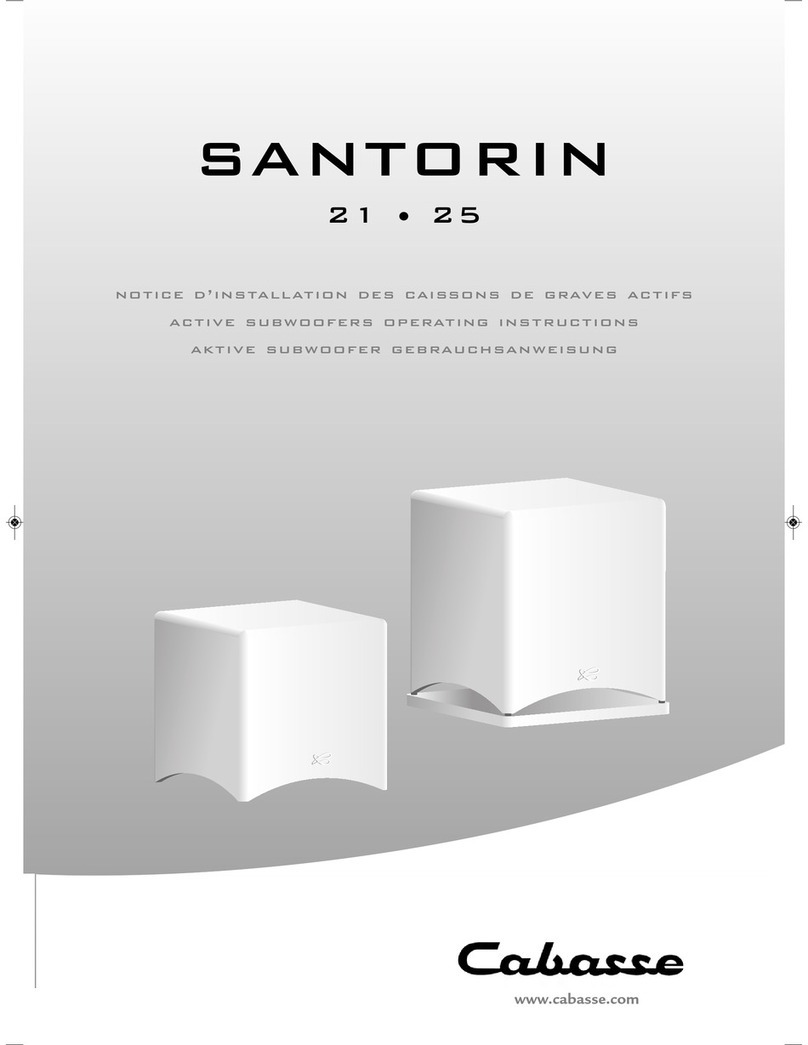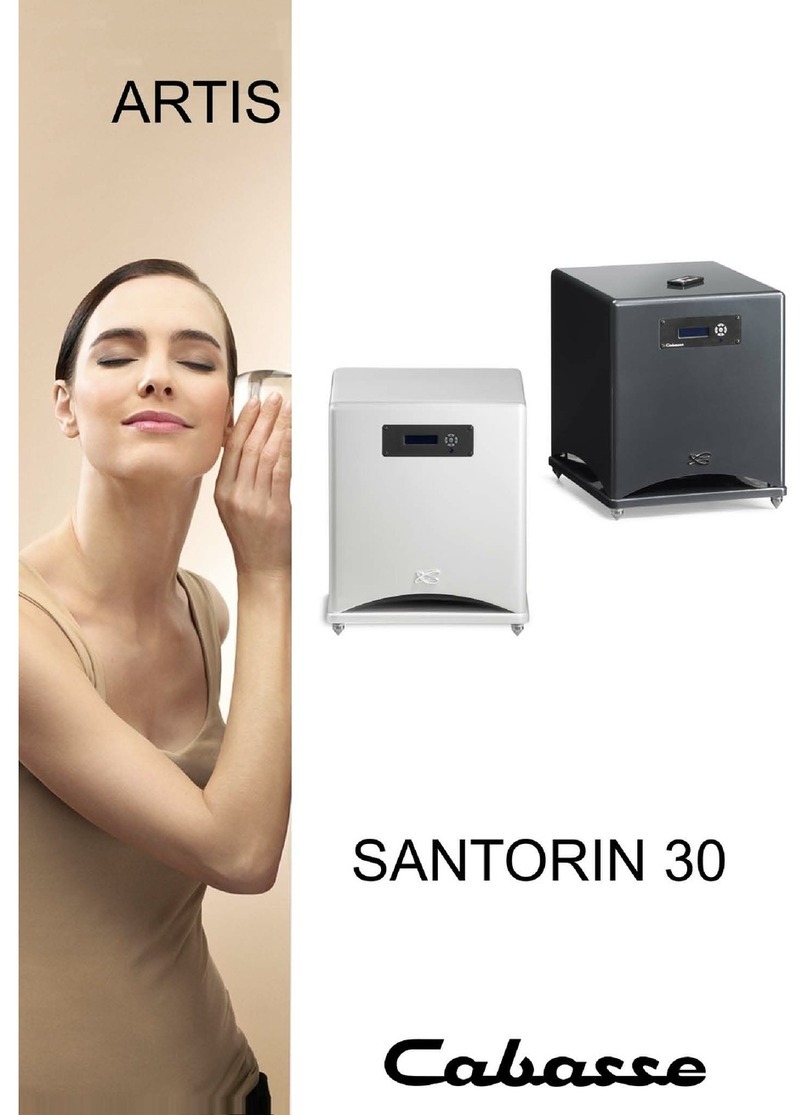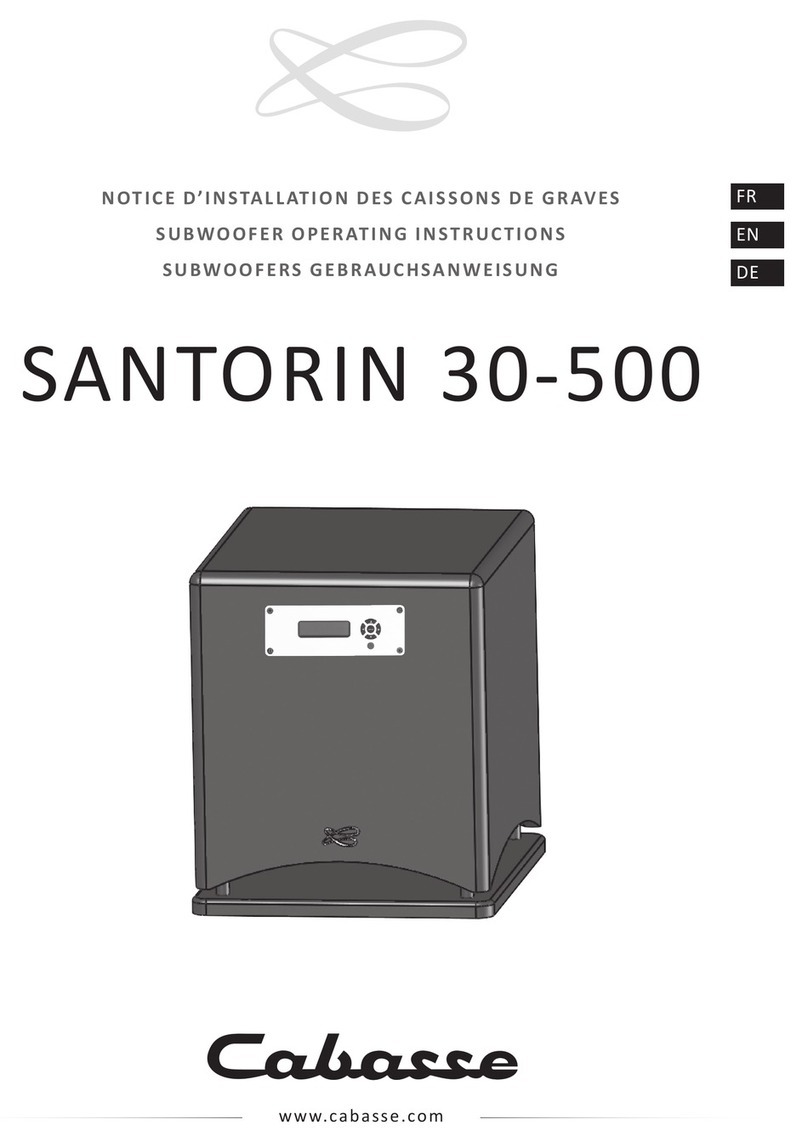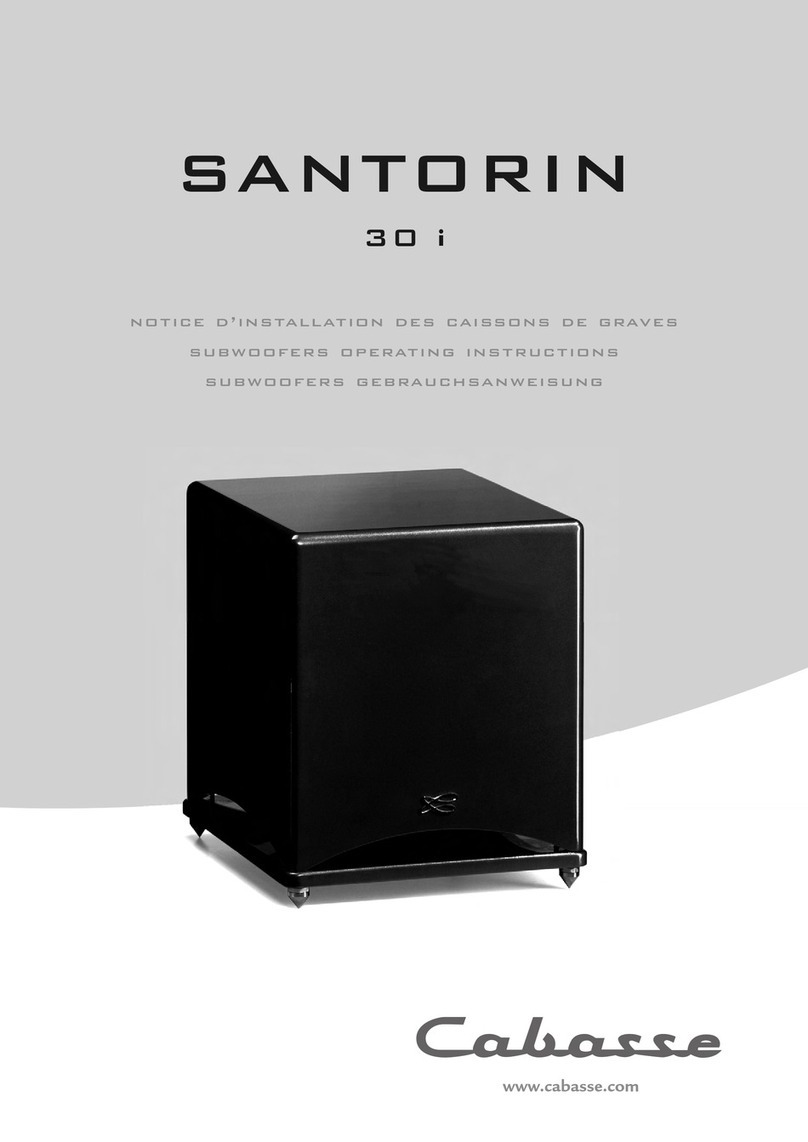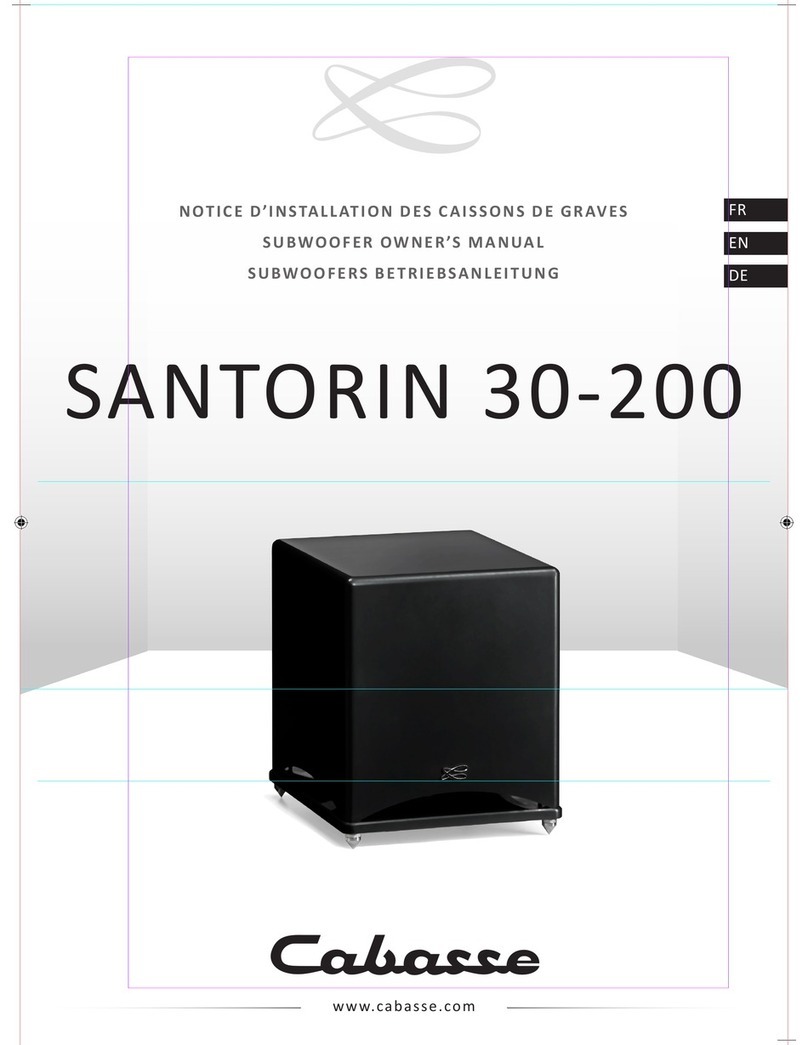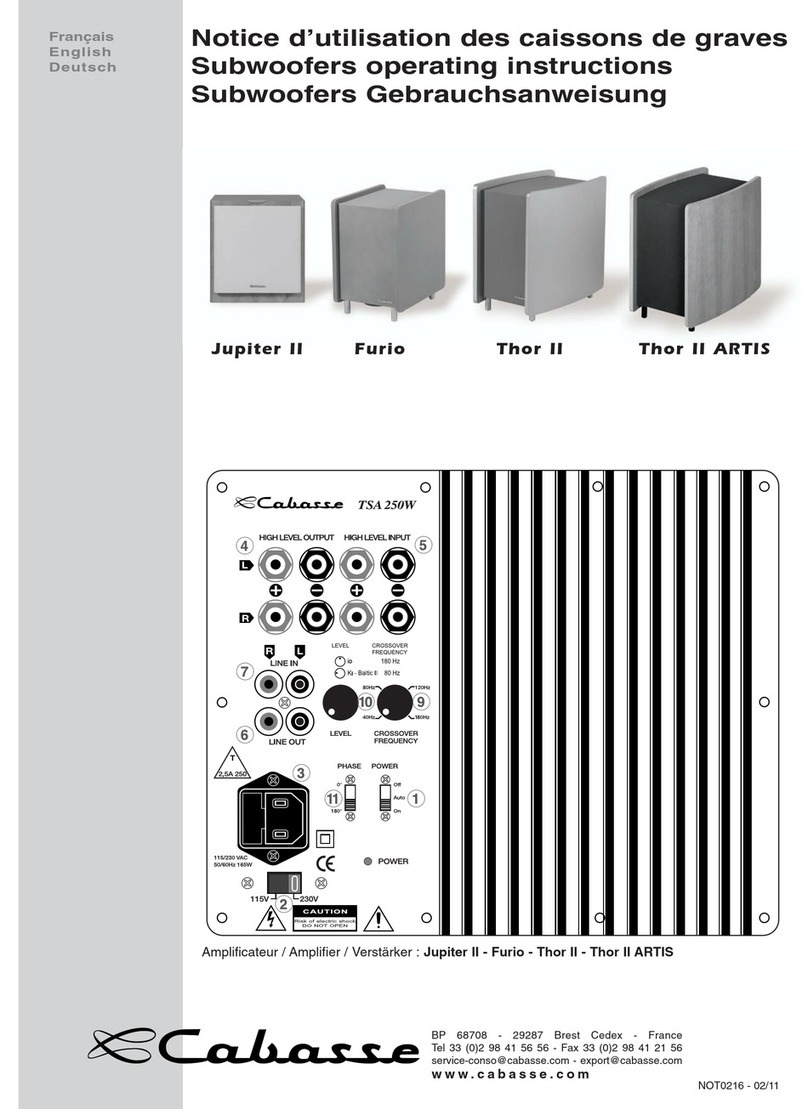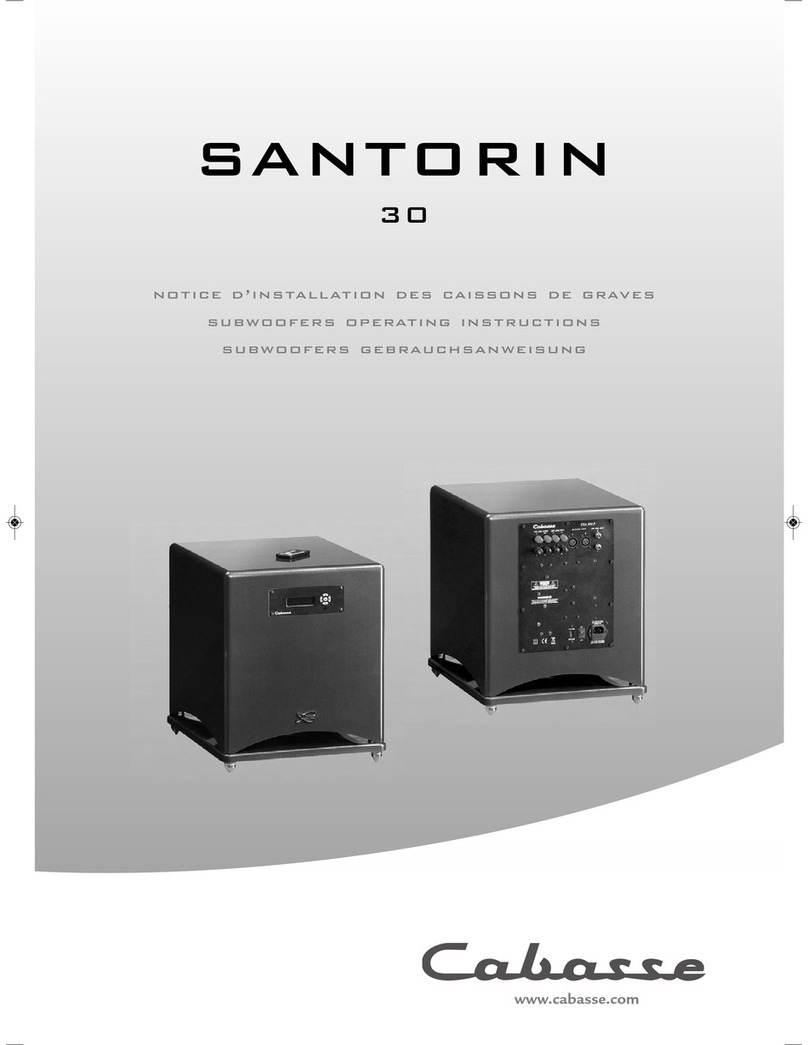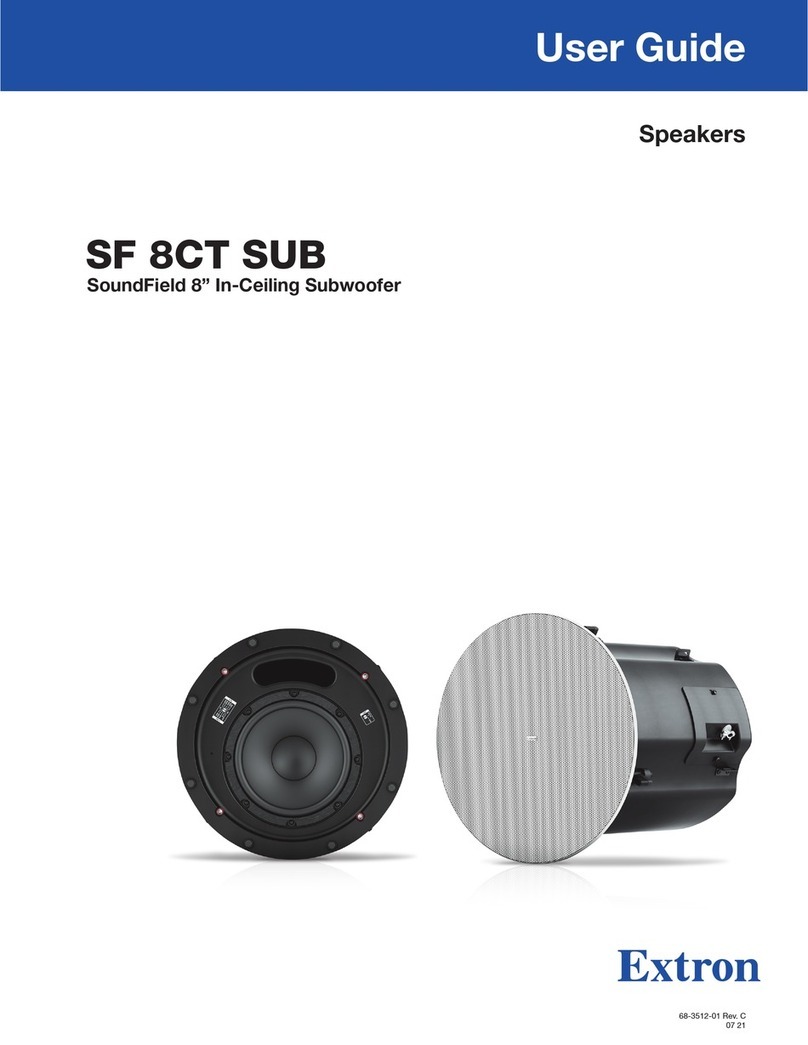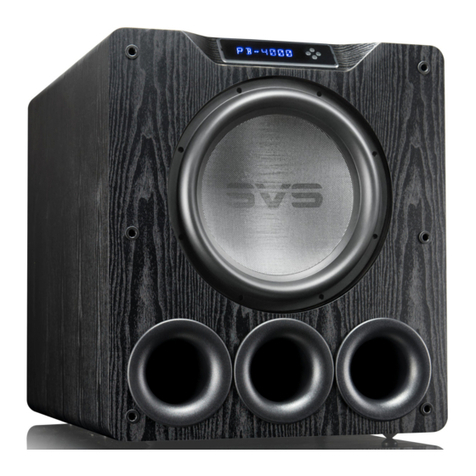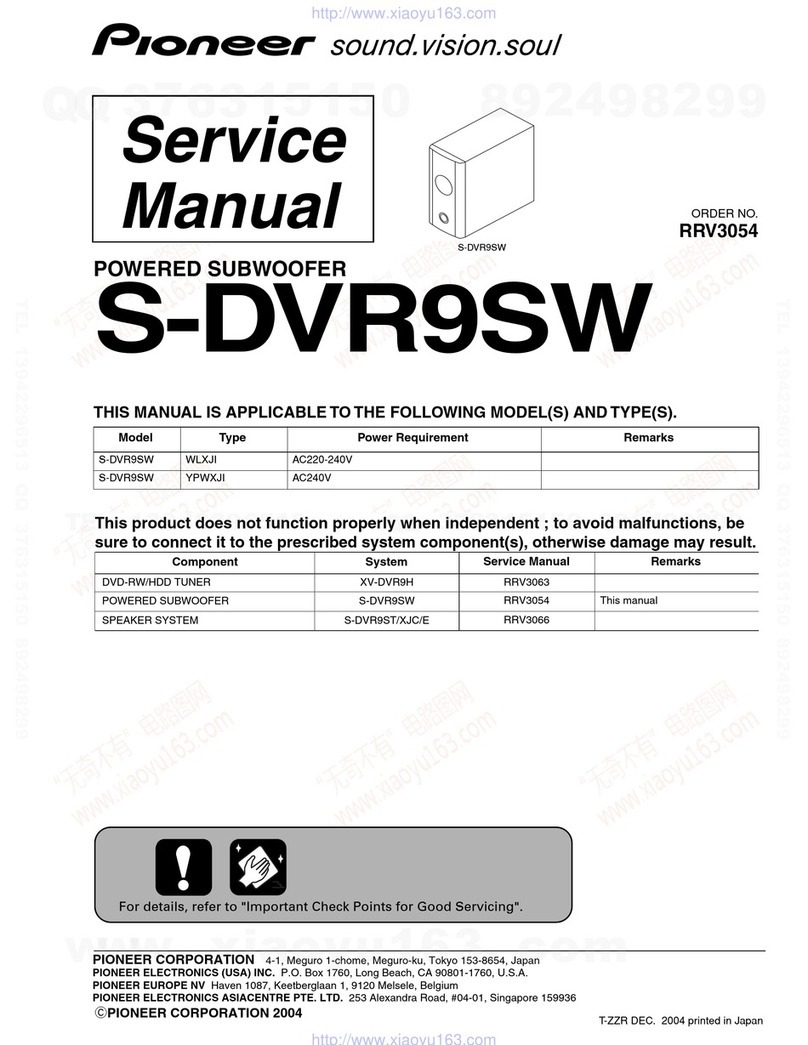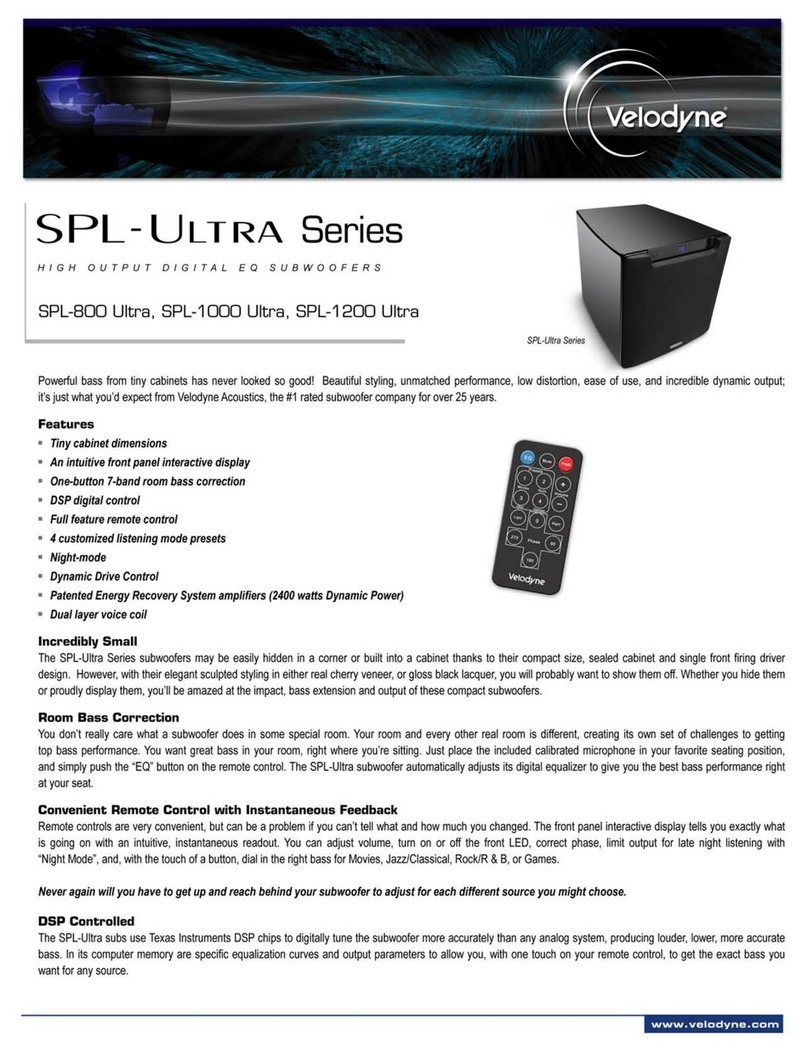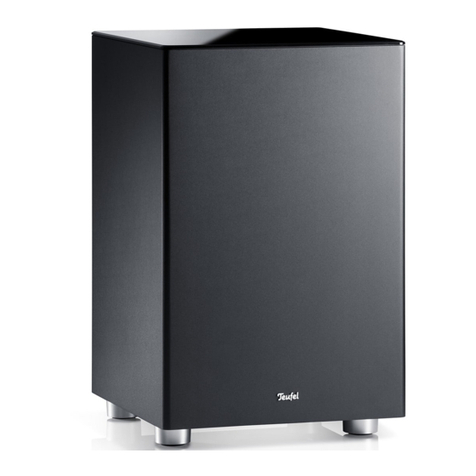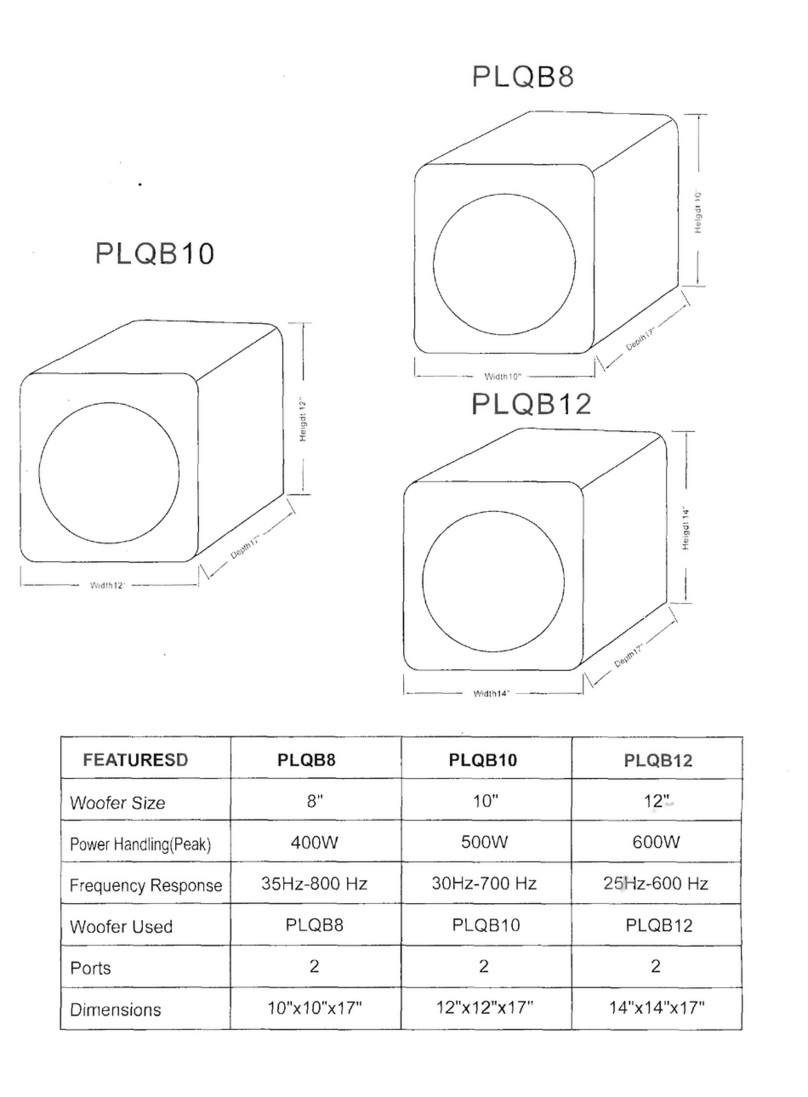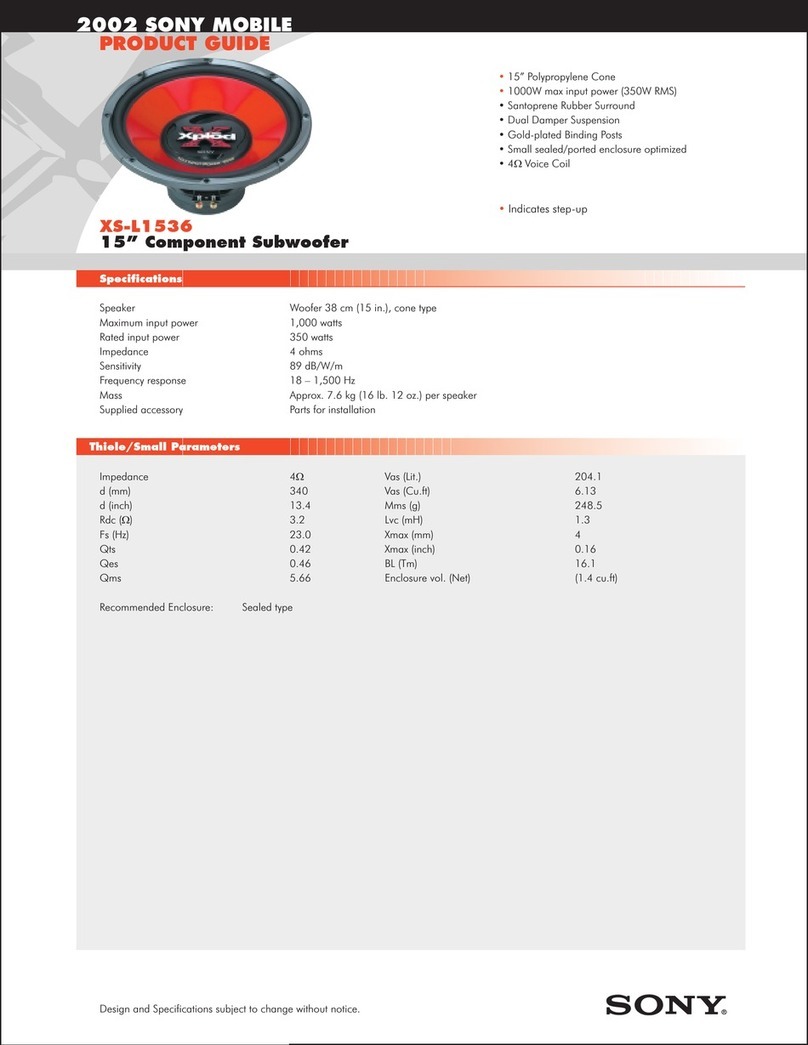Ventilations -
L’appareil doit être positionné de telle sorte
qu’il ne gêne pas sa propre ventilation. Par exemple, il ne doit
pas être installé sur un lit, un canapé, une couverture ou des
surfaces similaires qui pourraient bloquer ses orifices d’aéra-
tion. Il ne doit pas non plus être encastré dans des enceintes
confinées comme des étagères étroites ou des meubles qui
pourraient limiter la quantité d’air disponible aux entrées d’air.
Alimentation -
L’appareil ne doit être relié qu’à une source
électrique du type écrit dans le mode d’emploi ou conforme à
la sérigraphie sur le produit. Si vous n’êtes pas sûr du type de
courant fourni à l’endroit où vous vous trouvez, adressez-vous
à votre revendeur ou à la compagnie électrique locale.
Sacs plastiques -
Ne pas laisser les sacs plastiques de
l’emballage à portée des enfants afin d’éviter tout risque
d’étouffement.
Protection des câbles d’alimentation -
Le cheminement
des câbles d’alimentation doit être prévu de telle sorte qu’ils ne
puissent pas être piétinés, pincés, coincés par d’autres appa-
reils posés dessus, et une attention toute particulière doit être
accordée à l’adéquation des prises et à la liaison du cordon avec
l’appareil.
Foudre -
Pour une meilleure protection de l’appareil pen-
dant les orages ou s’il doit rester inutilisé pendant une longue
période, débranchez le cordon d’alimentation et débranchez
la prise d’antenne, vous éviterez ainsi les risques de détériora-
tion dus à la foudre ou aux surtensions.
Surcharges électriques -
Ne surchargez pas les prises d’ali-
mentation, les prolongateurs ou les rappels d’alimentation. Il
pourrait en résulter incendies ou électrocutions.
Corps et liquides étrangers -
On doit être attentif à ne
jamais laisser entrer d’éléments ou de liquides étrangers dans
l’appareil. Ils pourraient occasionner incendies ou électrocu-
tions. Ne versez jamais aucun liquide d’aucune sorte sur l’ap-
pareil.
Entretien -
L’utilisateur ne doit pas tenter de s’occuper des
opérations de maintenance au-delà de celles décrites dans le
mode d’emploi. Tout ce qui dépasse le simple niveau de l’en-
tretien doit être effectué par un personnel qualifié.
Maintenance -
Dans les cas suivants, vous devez impérati-
vement débrancher votre appareil et le faire vérifier par un
technicien qualifié :
■l’alimentation ou la prise a été endommagée.
■des corps étrangers ou du liquide se sont introduits dans
l’appareil.
■l’appareil a été exposé à la pluie ou a été aspergé d’eau.
■l’appareil ne semble pas marcher correctement alors que
vous l’utilisez dans le cadre de ses instructions de fonctionne-
ment normal. Ne manipulez que les contrôles couverts par le
mode d’emploi. Toute autre procédure pourrait le détériorer
et nécessiter l’intervention d’un technicien qualifié.
■l’appareil est tombé ou bien sa carrosserie est endommagée.
■l’appareil affiche des performances nettement modifiées.
Pièces détachées -
Si la réparation a nécessité l’utilisation
de pièces détachées, assurez-vous que le technicien a bien uti-
lisé les références préconisées par le fabricant ou présentant les
mêmes caractéristiques que les pièces originales. Des pièces non
conformes peuvent provoquer incendies, électrocutions ou
autres.
Vérifications -
Après toute intervention sur l’appareil, deman-
dez au technicien d’effectuer des tests afin de garantir que
l’appareil fonctionne en toute sécurité.
Exposition aux fortes températures -
L’appareil doit
être tenu éloigné de sources de chaleur comme radiateurs,
chauffage divers, amplificateurs, ou tout autre élément
susceptible de le placer dans des conditions de températures
anormalement élevées.
DEBALLAGE DES ENCEINTES
Ouvrir le côté mentionné sur le carton, replier sur les cotés les
rabats supérieurs du carton et retirer le cache de l’enceinte. Puis
retourner l’emballage avec son contenu, vider le carton de son
contenu et sortir l’enceinte de son emballage. Nous vous
conseillons de conserver l’emballage de votre enceinte à plat
pour une utilisation ultérieure éventuelle.
POSITIONNEMENT ET PLACEMENT
DES ENCEINTES ACOUSTIQUES
Positionnement des enceintes
Nos caissons de graves sont prévus pour fonctionner en
position verticale.
La plupart de nos modèles sont livrés avec un jeu de pointes ou
cônes de découplage. Ces accessoires sont à visser dans l’empla -
cement prévu sous vos enceintes. Ces pointes ou cônes de
découplage permettent d’assurer une meilleure stabilité de
l’enceinte tout en limitant les résonances pouvant être générées
par certains types de sols comme les planchers par exemple.
Le champ magnétique des moteurs des haut-parleurs va rayon-
ner au delà de l’enveloppe de l’enceinte acoustique. Il faut
donc éloigner d’environ 50 cm les appareils et objets sensibles
à ce type de rayonnement (téléviseurs, écrans d’ordinateur,
disquettes informatiques, bandes magnétiques audio ou vidéo,
cartes à puces...). Les enceintes centrales ne sont pas concer-
nées par ce type de problème car elles sont blindées magnéti-
quement.
Le placement optimal
pour une écoute stéréo en 2.1
Dans le cadre d’une écoute stéréo avec 2 enceintes ou 2 satel-
lites et 1 caisson de graves, nous vous conseillons de placer le
caisson de graves dans la zone écoute avant. Le placement
du caisson contre un mur renforce l’extrême grave et limite les
réflexions de 80 à 200 z. Cependant, pour obtenir le meilleur
résultat, il est toujours nécessaire de faire des essais d’em-
placement en fonction de l’acoustique de la pièce.
Le placement optimal
pour une écoute Home Cinéma ou 5.1
Pour la disposition d’un ensemble home cinéma, il est impor-
tant d’apporter la plus grande attention à la disposition des
enceintes supplémentaires spécifiques.
■L’enceinte centrale doit être placée le plus près possible de
l’écran en recherchant la position dans le lieu d’écoute qui
apporte la plus grande cohésion sur les dialogues entre le son
et I’image. En pratique, cela revient à placer l’enceinte cen-
trale au-dessus de l’écran si les enceintes principales sont plus
basses que celui-ci, et en dessous si les enceintes principales sont
plus hautes.
■Les enceintes arrière, voies d’effet ou surround doivent être
disposées contre les murs latéraux, légèrement en hauteur.
fr a n ç a i s
Attention !
pour éviter les chocs électriques, intro uire la lame
la plus large e la fiche ans la borne correspon ante et pousser
jusqu’au fon
Valable aux USA, au Canada et autres pays concernés
